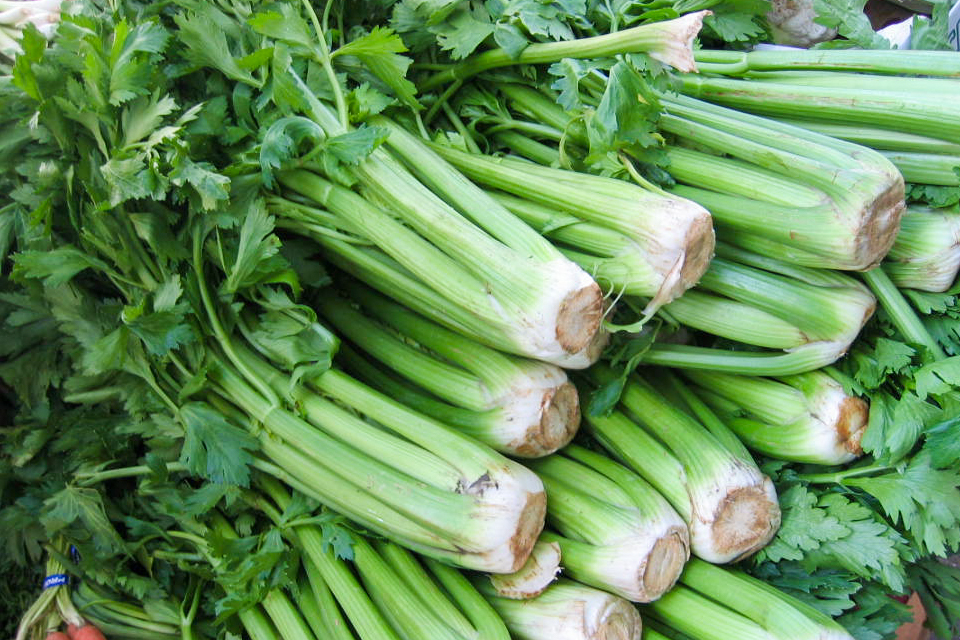Celery

One of the ingredients of the “holy trinity,” celery is a core ingredient for many recipes. In French cuisine, celery is sautéed with carrots and onions to create a mirepoix, or aromatic base. In Italian, Spanish, and Creole style cooking, a sofrito is made with celery, onions, and bell peppers. The entire vegetable is completely edible; in addition to the stalks, the seeds are used as a seasoning, the leaves can be tossed in a salad, and the root, also called celeriac, is often roasted or pureed. Celery is a biennial vegetable, meaning it has a normal life cycle of two years, and belongs to the umbelliferae family, whose other members include carrots, parsley and fennel. Choose tight and compact celery that looks crisp and snaps easily when pulled apart. The leaves should be pale to bright green in color. The outer ribs will have tougher stringy fibers, which can be peeled off with a vegetable peeler. Cut celery for immediate cooking, because it can wilt quickly. One way to revitalize celery is by adding moisture to the vegetable and placing in the refrigerator until it regains its crispness.
